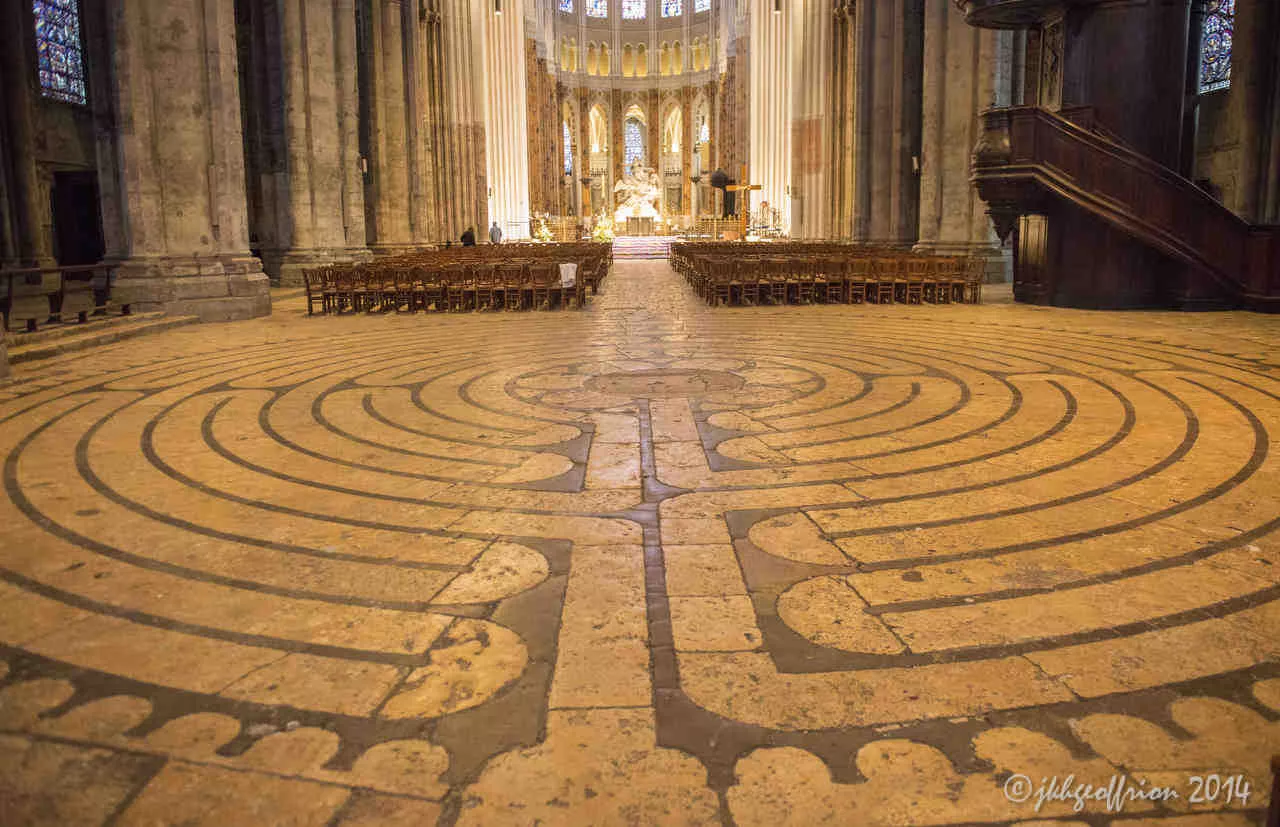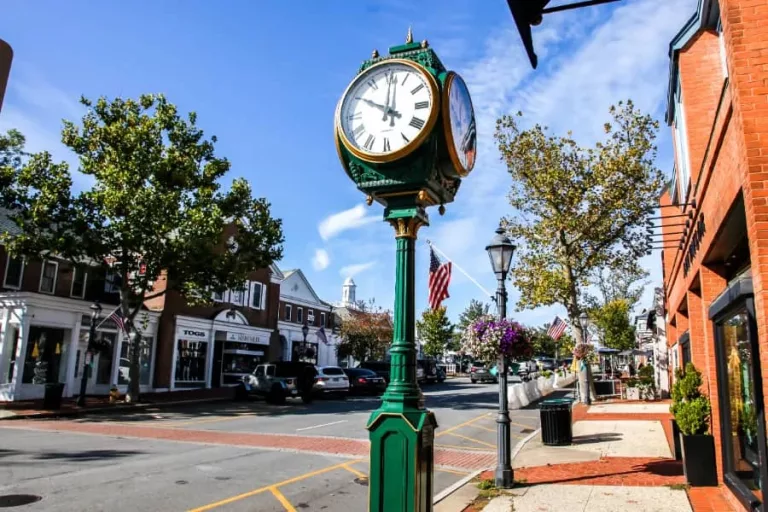
On Saturday, June 1st, the First Presbyterian Church is hosting a Women’s Retreat entitled, “Circle of Grace: A Journey Through the Labyrinth.” What is a labyrinth, you may ask? The word in English comes from the Greek λαβύρινθος (labyrinthos) and can be traced back to pre-historical legends. Pliny’s Natural History mentions labyrinths located from Egypt to Italy. Archeologists have uncovered Cretan coins from as early as 430 BCE with a labyrinth pattern stamped on them. Images of Labyrinths have been found from Roman times through to the Renaissance. The most famous Christian labyrinth is the 13th century pathway embedded in the floor of the Chartres Cathedral in France.
Labyrinths are not mazes. Mazes are designed to be a puzzle, a challenge to be faced, a problem to be solved. As in the scene in Harry Potter and the Goblet of Fire, the Triwizard maze was dangerous! You can get very lost in mazes! Labyrinths, on the other hand, are designed so that it’s impossible to get “lost.” In fact, they are designed rather so that if you just continue walking, you can be “found” in the center! There is one entryway and, after you have walked to the center and paused for reflection, you simply turn around and walk until the path leads you back out of the labyrinth.
Jill Kimberly Hartwell Geoffrion, PhD, DD, is a renowned scholar on labyrinths, and teaches that labyrinths can mean different things to different people. Like many pagan holidays and practices, Christians have adopted the use of labyrinths for reflection, prayer and meditation. Labyrinths invite you into an embodied experience. You walk into the labyrinth, and once you enter, you are now “on the way.” What you experience depends, of course, on what you bring to the labyrinth.
For many of us, the labyrinth offers another way to enter into prayer. The best definition of prayer that I have heard is simply, “Paying attention.” Walking is the method of the labyrinth, and allows you to slow down and pay attention to your inner life, to your breathing, to the sources of stress and anxiety of life with all of its twists and turns, but to be reminded that in the end, you will be centered and “held” by the love of God.
You can look at the labyrinth, or think about it, but in order to experience the power of labyrinth prayer you have to walk it. Chartres Cathedral was part of a network of monuments that provided shelter for pilgrims around Europe who over the past thousand years chose to walk the “Camino Santiago,” (or in French, the Chemin de Saint-Jacques de Compostelle). I was told that labyrinths were set up in rest stops like the Chartres Cathedral for those who could not go on a pilgrimage.
In 2017, I was able to enjoy a sabbatical for three months, and with the help of mentors designed a time of rest and refreshment for mind, body, and soul. My first month was enjoyed as a visiting scholar at Cambridge University. I took in lectures and enjoyed evensong every night at St. John’s College Chapel. The second month, I walked the 500 mile Camino Santiago, the “French route” from St. Jean pied de Port all the way to Santiago, and then on to Finisterre, Spain.
Walking for 500 miles with nothing but a pack on your back is a learning experience in so many ways. Over 300,000 people from around the world and different faith traditions “walk the Camino” for different reasons, but most people who experience the Camino would say the Camino “teaches everyone something.” It’s a cliché to say that we are all on a journey. The Camino Pilgrim has plenty of time to reflect on life and meet and talk with other pilgrims “on the way.”
One of my many “camino stories” came very near the end of my journey. I had made it to Santiago, the goal of the pilgrimage, but decided that my real destination was Finisterre, what in the medieval mind was literally “the end of the world.” I was overconfident to begin with, but had 28 days of experience already on the Camino to Santiago, and so thought I’ll have no problem on the three day journey to Finisterre. I dispensed with a proper guidebook and map.
On the second day of the three day journey to Finisterre, I got terribly lost, and ended up walking twice as far as I should have. I ran out of water, and because I was on the wrong path, I didn’t see anyone for miles, and was parched and tired, and starting to get worried. I prayed, “God give me strength to make it to the next town.” But the next town just wasn’t there. I was way off course.
Then, I came upon a small chapel in a grove of trees. There, sitting in plain sight in front of the chapel, was a bottle of water. In desperation, I called out to see if someone was near. I couldn’t believe that there was just a bottle of water there waiting for me! When no one answered, I quickly guzzled the bottle of water. That gave me the stamina to make it to a fresh spring a few more miles down the road, and finally, I did arrive at the coast and after taking off my backpack, fell gratefully into the refreshing waters of the North Atlantic ocean.
Jill, the labyrinth expert, asked me to reflect on that last part of my Camino journey, and suggested wisely that perhaps God was teaching me that at the end of my life journey, it is better not to go alone, but try and benefit from the wisdom of others. And most importantly, to trust that God will provide, even when I have exhausted all my resources.
Perhaps labyrinths won’t give the same intensity of experience as walking for hundreds of miles in the hot summer months of dusty northern Spain, but many have found that the Labyrinth can be a way God speaks to us. Jill writes, “May the joy of the journey be yours. May Love companion you every step of the way. May the path lead you safely Home.”
For more information on the Labyrinth “Circle of Grace” retreat, see https://fpcnc.org online.
The Rev. Dr. Scott Herr is one of the pastors who serves at the First Presbyterian Church in New Canaan.




